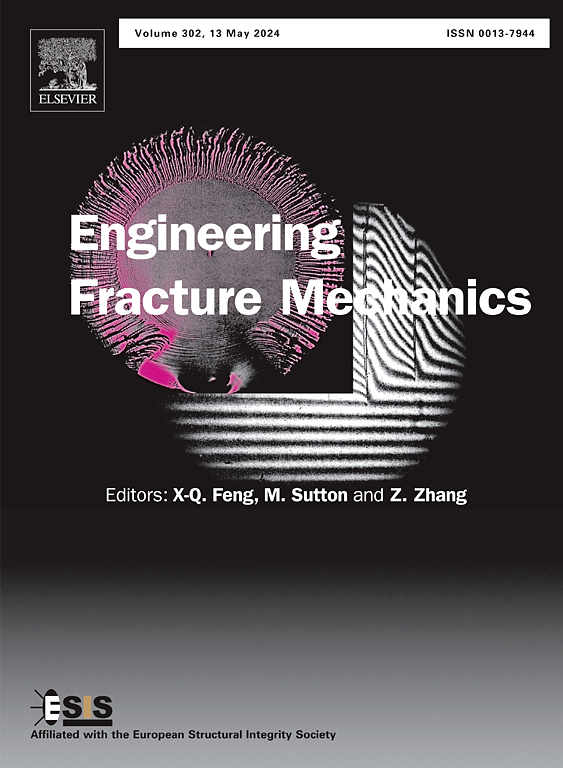Experimental study on the fracture behavior of a novel multi-scale fiber reinforced ultra-high performance concrete with hollow microspheres after high temperatures
IF 4.7
2区 工程技术
Q1 MECHANICS
引用次数: 0
Abstract
In this paper, a novel multi-scale fiber reinforced ultra-high performance concrete (MSFUHPC) reinforced with polyethylene (PE) fibers, steel fibers, and carbon fibers mixed with lightweight aggregates is developed to obtain high strength and high toughness. The fracture behavior of MSFUHPC after exposure to elevated temperatures is critical to understanding the structural behavior of engineering structures in a fire accident. Therefore, the effects of multi-scale fibers, fly ash cenospheres (FAC), and hollow alumina microspheres (HAM) on the fracture properties of MSFUHPC are investigated. Results reveal that multi-scale fibers can significantly enhance the fracture toughness of UHPC by restraining crack propagation. Incorporating hollow microspheres increases the number of microcracks around the main crack, which prolongs the unstable crack propagation stage and improve the deformation capacity, as a result of which the unstable fracture toughness and the total fracture energy can be strengthened. Moreover, the fracture toughness and fracture energy of the specimen gradually decrease as the temperature increases from 25 °C to 600 °C due to the weakened bonding effect of the fibers with the matrix and the deteriorated microsphere-matrix ITZ. After 400 °C, the specimens mixed with FAC can maintain a relatively high ductility index because of the good bonding between FAC and the matrix. After 600 °C, the fracture energy of MSFUHPC decreases by about 82.3 %-92.1 %, mainly thanks to the thermo-damaged bridging capability of the steel and carbon fibers.
求助全文
约1分钟内获得全文
求助全文
来源期刊
CiteScore
8.70
自引率
13.00%
发文量
606
审稿时长
74 days
期刊介绍:
EFM covers a broad range of topics in fracture mechanics to be of interest and use to both researchers and practitioners. Contributions are welcome which address the fracture behavior of conventional engineering material systems as well as newly emerging material systems. Contributions on developments in the areas of mechanics and materials science strongly related to fracture mechanics are also welcome. Papers on fatigue are welcome if they treat the fatigue process using the methods of fracture mechanics.

 求助内容:
求助内容: 应助结果提醒方式:
应助结果提醒方式:


